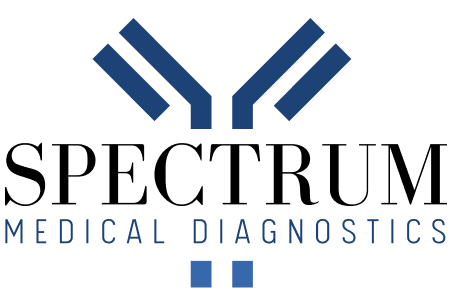Despite the legalization of marijuana in Canada, the continuous argument whether or not THC is a gateway drug rages on. Because of legalization, it is more important than ever for individuals to understand the effects of marijuana to better educate themselves, as well as others.
Marijuana and Its Uses
Marijuana is a drug derived from the Cannabis plant. THC is the active substance in marijuana that has mind-altering effects. Up until October 2018 marijuana was an illicit drug and was also the most commonly used drug. However, in recent years the use of marijuana has dropped.
Marijuana was first legalized for medical use and has now been legalized for adult recreational use in Canada. People can smoke or ingest “edibles” to get the desired “high” from THC. Currently, edibles are not available for legal sale.

Harmful Effects of Marijuana
- Marijuana has been linked to harmful effects including:
- Memory difficulties
- Anxiety, paranoia and panic attacks
- Increased probability of psychotic symptoms
- Hallucinations
- Decreased reaction time
- Increased risk of heart attack and stroke
- Coordination problems
- Impaired driving
- Sexual dysfunction in males
When used on a regular basis it can also have long-term effects including:
- Lower IQ, which is more prominent in those who begin use at an early age
- School or work performance issues
- The increased challenge for performing complex tasks
- Lack of life satisfaction
- Relationship issues
- Antisocial behaviour including stealing and lying
- Financial difficulties
- Higher unemployment
- Addiction
The Gateway Drug Theory
The Gateway Drug Theory suggests that using marijuana leads to the use of ‘harder’ drugs. This belief is based on marijuana use being considered an “experimentation” stage which in turn, will encourage the desire to heighten pleasure by using harder drugs, like heroin and opioids. It can also introduce users to social groups who will expose them to other substances. This increases exposure as well as pressure to participate in the use of heavier substances.
This progression begins with socially acceptable substances such as nicotine and alcohol which are considered the other two gateway drugs. Use of nicotine and alcohol can lead to cannabis use. The feelings produced by THC leads to the desire to try harder illicit drugs. Research, however, disputes this theory showing that more than 20 percent of marijuana users do not follow this path. According to the National Institute on Drug Abuse, although many studies do tie increased drug use to initial use of marijuana “the majority of people who use marijuana do not go on to use other, ‘harder’ substances.”
As well there are contextual factors that have to be considered in those that did become opioid users. These factors include:
- Neighbourhood and community environment
- Level of parental supervision
- Unique individual characteristics such as their biology and life experience
- Whether their initial experience with cannabis is considered enjoyable or not
- The individual’s perception of marijuana being “safe” or “harmful”
Problems with the Gateway Drug Theory
Today, one of the biggest issues with the Gateway Drug Theory is that much of it stems from the fact that users are breaking the law. Their willingness to purchase illicit drugs introduces them to drug dealers and provides a comfort level with mingling with other drug users and lawbreakers. However, with the legalization of marijuana, it can be purchased much like alcohol which removes the criminal element. This could make it less likely that users will be willing to interact with drug dealers to move onto harder drugs. Many argue that it’s not as much use of the drug itself, but rather the criminal purchase of marijuana that contributes to the progression to harder drugs.
The National Institute for Drug Abuse presents the following reasons why people might use harder drugs:
- People who use drugs in their teens or even their early 20’s are still experiencing brain development. This means it can train the brain to experience a different view of rewards which are tied to the effects of drugs. This makes the idea of using other drugs more appealing.
- Research on animals found that use of marijuana can make opiate use more pleasurable.
- Exposure to users and sellers of harder drugs.
- Use of cigarettes and alcohol have the same effects, putting children at higher risk of becoming substance abusers.
- Further studies have also tied not only marijuana use, but alcohol and tobacco abuse to further drug use. The Center on Addiction and Substance Abuse at Columbia found that children who used any of these substances were 266 times more likely to use cocaine compared to those that did not use any of the “gateway drugs.”
- Children using all three were 77 times more likely to end up using cocaine than those using just one.
- Adults using alcohol, tobacco and marijuana were 323 times more likely to use cocaine and those using all three were 104 times more likely to use cocaine.
- Further Studies
According to a study by Andrew R. Morral, Daniel F. McCaffrey & Susan M. Paddock:
“Those with the highest propensities to use drugs are likely to use the first one offered to them, and that happens to be marijuana in most cases. Moreover, if a high drug use propensity is associated with greater frequencies of drug use, the common-factor theory can also account for the dose-response phenomenon: marijuana use frequency is associated with risk of hard drug initiation because both are controlled by drug use propensity.” Their studies showed that: “Marijuana gateway effects may exist. However, our results demonstrate that the phenomena used to motivate belief in such an effect are consistent with an alternative simple, plausible common-factor model. No gateway effect is required to explain them. The common-factor model has implications for evaluating marijuana control policies that differ from those supported by the gateway model.”
In general, it’s important to be aware of the effects of marijuana and the potential threats it poses. With legalization, individuals are less likely to be exposed to the criminal element of marijuana, but can still be exposed to the culture associated with drug use.
For more information on marijuana testing contact Spectrum.

